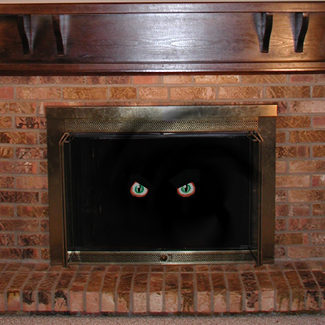If you have been a reading my blogs you have probably gathered that I am not a big fan of retrofit gas logs. I don’t like vented or vent free gas logs, but it is for two different reasons:
Vented Gas Logs:
These are usually retrofitted into wood burning fireplaces. They are sold as an easier way to enjoy your fireplace, without the inconvenience of wood. To a degree they deliver on that promise, but there is more that they deliver.
- When you install a gas log you must remove the damper or have it clipped open all the time. This is a bad deal for obvious reasons. This means you have a big hole in your home all the time, and you cant close it. It doesn’t matter if your fireplace is on or not that flue has to remain open and that allows for outside air to come in.
- Most of the heat that is generated by the gas logs burning goes right up the flue. Unless you have a special kind of heat exchanger in your fireplace, that gas you are burning is throwing its heat right up the flue with the fumes. All you will get is some paltry radiant heat.
- Older gas logs have pilot lights. They are the drippy faucets of the gas world. 24/7 you are trickling fuel down the drain.
Vent-Free Gas Logs:
I could go on and on about vent free gas logs. I really do not like these things. You are burning gas and venting all the heat and fumes into the home. This is great for heating, but what about air quality?
Vent-less gas log manufacturers swear by their newer products and say they are safe and do not elevate CO or CO2 levels. They say they even build in CO sensors that will shut the vent free heating device off if it malfunctions and causes a CO backup.
However, The University of IL (Urbana/Champagne) in 2008 introduced results of a study they conducted on 30 homes over a 3 years period to see how vent free gas appliances do effect the homes air quality. The complete study is available on-line, but it is a bit long winded, so I will give you a brief summary of what I found most interesting about it.
- NO2 is the gas most likely to exceed acceptable levels when operating a vent free device.
- The safety shutoff sensor on vent free units does not sense for NO2 levels.
- CO occasionally exceeded the 8hr maximum in tests where they was a long continuous run time or in a tightly enclosed space.
- The EPA says “Avoid installing un-vented (or “vent-free”) space or water heating appliances“
Now we all know that Carbon Monoxide (CO) is not something we want in our homes but (NO2) Nitrogen Dioxide was new to me so I had to look up the side effects. Quite frankly, I found the side effects to be less than desirable as well.
